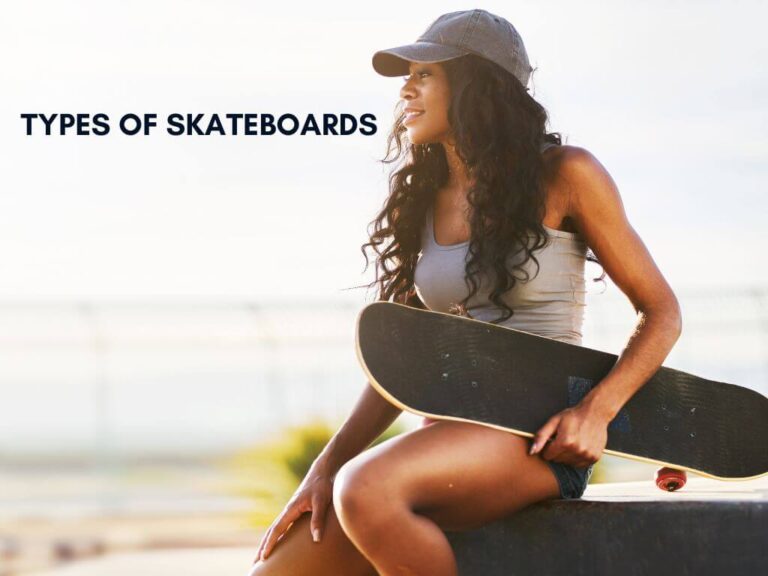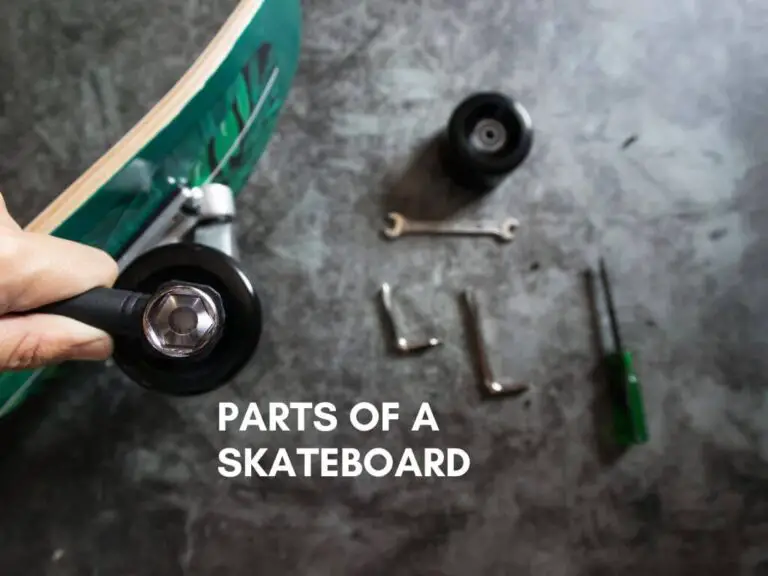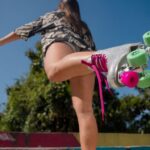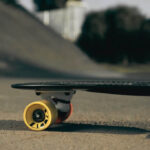Skateboarding is one of the most popular outdoor activities for young people around the world. In addition, ollieing on a skateboard adds a unique twist to this title. However, if you are a new skateboarder, if you want to learn how to ollie on a skateboard, or if you have already searched over the internet for “how to ollie on a skateboard” many times but haven’t gotten any proper navigation yet, relax! Take a deep breath. You have come to the right place. Continue reading further to learn more about how to ollie on a skateboard.
The Ollie is one of the most popular skateboarding tricks. By following a few simple steps, you will learn how to ollie on a skateboard.
What is Ollie and What is its History?
Before you search for how to ollie on a skateboard, you should know what ollie is and its history.
The Ollie is a famous skateboard first trick invented by Alan Gelfand in the late 1970’s. This trick was named after his middle name, “Ollie”. Ollie on a skateboard means lifting the entire board in the air with the help of foot techniques. The next step is to horizontally level the board again with the help of foot techniques while the board is in mid-air. The final step is to land smoothly on the ground while both feet are on the skateboard.
Usually, the purpose of performing this trick is to avoid any short obstacles, such as small streel holes or any curves, by hoping the skateboard over these.
Rodey Mullen and His Inventions in Skateboarding
Rodney Mullen, a professional skateboarder, later updated this ollie technique and invented many ollie techniques of his own.
He later invented a few tricks, like flip tricks and many kinds of stationary ollies like, the heelflip, flat ground ollie, the 360-flip, the kickflip, and many others. These ollie techniques are the foundations of today’s modern skateboarding stunts.
Tony Hawk and His Invented Skateboarding Tricks
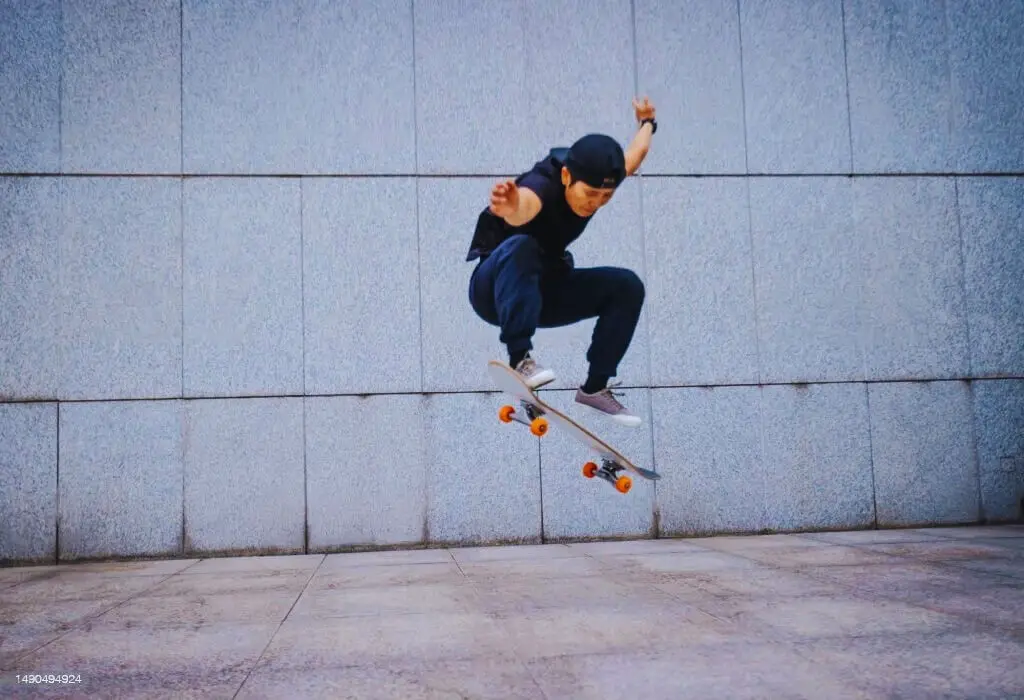
In the same fashion, Tony Hawk, an American professional skateboarder, also modified the basic ollie method and invented many ollies and jumping techniques like the Saran wrap, ollie-to-Indy, the frontside 540-rodeo flip, and the gymnast plant, and many others. Besides, he used to perform contemporary skateboarding which basically broke the typical skateboarding practice tradition.
Equally important, he is the pioneer of the famous vertical skateboarding technique and street skateboarding. Numerous skateboarding magazines also featured him several times for his outstanding skills in skateboarding. Moreover, if the question arises like, “how to ollie on a skateboard?“, pro skaters refer to his name.
Steps for Learning Ollieing on a Skateboard
Ollie on a skateboard is not an overnight process to learn. It will take time to be mastered. This is a multi-layer sequential process. After learning the first step, the second step will appear. This is a gradual learning process. Before you attempt for advanced skateboarding tricks, you must perform basic practice of skateboarding.
1. Get a Good Quality Skateboard
Usually, a skateboard consists of three key components. They are: the wheels, the trucks, and the deck. More than that, there are many parts present in a skateboard that you should know about to ensure a good quality skateboard for you. They are-
- The wooden platform; basically, known as the deck.
- The rubber surface on the wooden platform; known as grip tape,
- Bolts; connects the components.
- Baseplate
- Kingpin
- Axle
- Hanger
- Bearings
It is critical that you understand each component of the skateboard and how they function.It will help you to understand your skateboard better. It is obvious that you will get an advantage in terms of ollieing when you are properly acquainted with your skateboard.
2. Learn the Fundamentals of Skateboarding
Before you search the internet for “how to ollie on a skateboard,” you should first learn the fundamentals of skateboarding. Ollieing on a skateboard is the advanced version of basic skateboarding. So, before board will starting the learning process of ollieing, you must spend time with your skateboard to learn the basics and practice skateboarding. Steps you must follow to learn the basics
- Try to keep standing on the skateboard without losing control or falling down.
- Try to learn to ground push the skateboard and to gain control over a running skateboard.
- Try to practice turning, doing tic-tac, and curving with your skateboard.
- Try to practice stopping or slowing the skateboard down.
- Learn how to gain different momentum for different purposes.
- Always keep your body crouched and shoulders straight lined up with the board so that you gain good control over the board.
- Perform downhill slalom skateboarding. It will enrich your curving skills of skateboarding.
- Ensure that you are practicing defensive skateboarding. It will reduce the possibility of encountering accidents.
These will ensure basic skateboarding, which is the fundamental skill in skateboarding for learning to ollie.
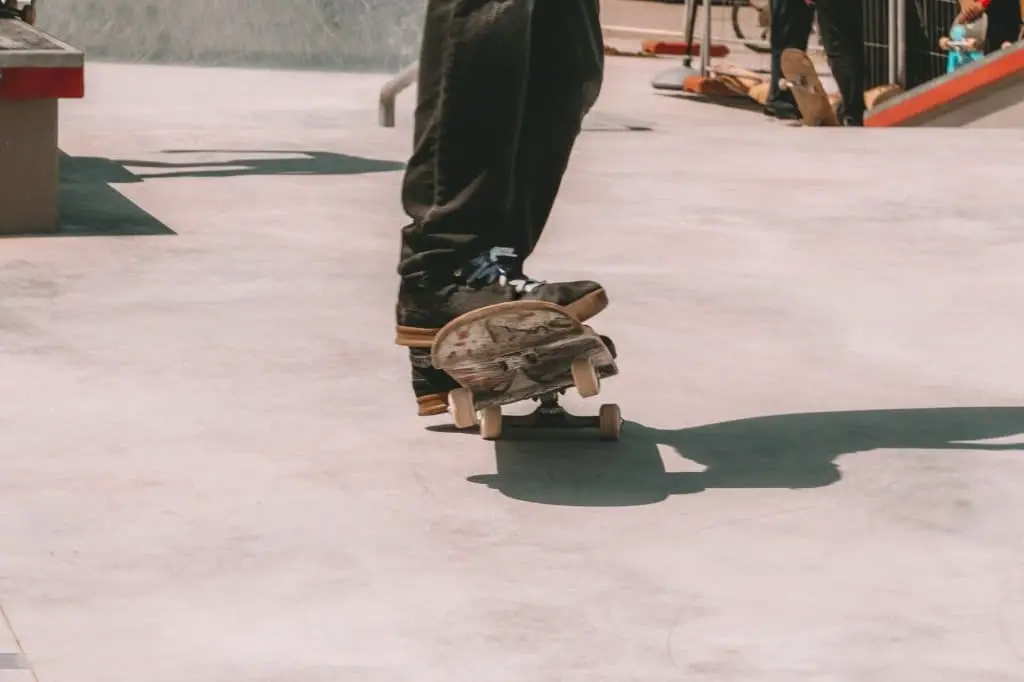
3. Maintain Poper Stance on Skateboard
Proper stance refers to the positioning of the body and feet in accordance with the board. In terms of learning to ollie, proper stance of your foot and body is one of the most crucial essentials.
- For this, a crouched-like body on the skateboard is mandatory. It forces balance across the board.
- One foot will be behind the front wheels and another foot will be at the edge of the rear side of the board.
- Shoulders should be straight forward. It helps to change directions quickly and gain control of the skateboard.
4. Accurate Foot Placement
To learn ollie on a skateboard, the most important feature is accurate foot positioning on the skateboard. Exact foot placement will definitely help you perform a perfect ollie. Well, let’s see the placement of both feet.
Positioning of the Front Foot
You must ensure the accurate positioning of the front foot on the grip tape of the skateboard.
- The accurate position of the front foot is between the middle of the skateboard and the behind front wheel.
- You must ensure that your front foot doesn’t go beyond the middle of the skateboard and cross the front wheel line.
- Another important thing is that the front foot should stay at a 90-degree angle with the skateboard. That means foot positioning will be a crossway position according to the skateboard.
Positioning of the Back Foot
In the ollie, the position of the back foot has very great significance. Usually, the accurate movement of the back foot creates the momentum of the lifting power of the board.
- So, the accurate position of the back foot is the ultimate rear or back edge of the board.
- You must ensure that your back foot stays behind the rear wheels of the skateboard, which part is a little bit curvy to upward.
- Like the front foot, another important thing is that the back foot should stay at a 90-degree angle with the skateboard. That means back foot positioning will be a crossway position according to the skateboard.
5. Practicing the Jump Technique standing in a Certain Place
After ensuring your stance and proper foot positioning on the skateboard, the next step is to practice jumping techniques with the skateboard on flat ground. There are a couple of things to practice within this jumping technique.
Hitting the Rear Edge of the Skateboard on the Ground with the Back Foot
- At first, you have to loosen up the weight of the front foot placed forward on the skateboard.
- Then, hit the rear edge of the skateboard on the ground with your back foot. This will result in a skateboard angle with the ground. But the rear wheels and rear edge of the skateboard will still be connected with the ground while the front sides of the board will be in the air.
- Again, come back to the previous position.
- Practice this technique for a minimum of 5 minutes until you get comfortable with it.
Front Foot Forward Dragging
After practicing hitting the rear side of the skateboard, Then, you must follow the following steps.
- When your skateboard is in an angular position with the ground, drag your front foot forward until you reach the front edge of the board.
- Drag with the outward side of your front foot.
- Always maintain the connection between your feet and the board.
- When your front foot reaches the front edge, try to push down the front side of the board into the ground.
- Keep practicing this for 10–15 minutes until you get comfortable with this technique.
Combine the Hitting and Foot Dragging Techniques
After you have practiced hitting and dragging techniques separately, it is time to practice them together. Follow the following steps:
- At this stage, while you are hitting the board on the ground, crouch your body.
- Crouch and shift your weight to your back foot. It will ensure higher ollie.
- While you are crouching and hitting the board on the ground at the same time, get up from the crouch position as soon as you hit the ground. After that, the backward force generated due to hitting the ground will lift the board in mid-air in an angular position.
- Try the dragging technique while the board reaches the highest point in the mid-air.
- Using the dragging technique, try to make the board parallel with the ground from the angular position while your board is at its maximum height in mid-air.
- Drag your front foot all the way to the front edge of the board and push it down to make it parallel with the ground and line up with the rear side of the skateboard.
- After reaching the edge, make your foot flat with the board while your foot will still be connected with the board.
- Don’t push so hard that the front side goes down compared to the line of the rear side.
- Try to land on the ground while both feet are on the skateboard.
- Keep practicing this for a minimum of 2 days until you get comfortable with this.
Practicing all of them together is going to be too hard for the first time, especially for beginners. But you must keep practicing it. When you keep practicing them altogether, it will create muscle memory within your body.

6. Practicing of Ollie with the Momentum of a Running Skateboard
Once you have practiced all of the aforementioned techniques altogether, it is time to practice the ollie while running the board. Steps to follow
- Create running momentum on your skateboard.
- Ensure you have accurate body positioning, stance, and foot placement.
- Always bend your body in a crouch position while skating.
- Try the hitting and dragging techniques together with the help of your muscle memory.
- Finally, try to land your skateboard with both feet on the board.
Pro Tips
While you are skating or preparing to perform an ollie, there are some tips provided by pro skaters you must follow.
- Practice the ollie on soft ground first, like grass. If you are practicing indoors, do it over a mattress.
- While you are practicing the ollie in a constant place without pushing the board forward, try to grab any strong object with your hands. It will help you to gain control.
- Crouch low enough to get a higher ollie. If your crouch is not low enough, you will get a low ollie.
- To get a perfect and satisfactory ollie, spend enough time learning every stage of the ollie.
Cautions
While skating, you must take certain precautions.
- If you are a beginner, always wear protective gear like knee pads, elbow guards, and helmets.
- If you are a beginner, wear converse type shoes for skating.
- Always practice defensive skateboarding techniques. Otherwise, there is a strong possibility that you may find yourself in an accident.
- Don’t try your first ollie over any object or obstacle. Practice your ollie on flat ground first.
- Don’t try anything that is out of your comfort zone. It is bad practice that learners are too quick to attempt dangerous stunts like scooping motion ollie, and that is why, most often, accidents occur.
Safety Considerations

When it comes to skateboarding, safety should always be a top priority. In this section, we’ll explore important safety considerations that will help you stay protected while enjoying the sport. We’ll discuss the significance of wearing protective gear, choosing a safe practice area, and understanding skateboarding etiquette and awareness of your surroundings.
Wearing protective gear (helmet, knee pads, etc.)
One of the most crucial safety measures in skateboarding is wearing the appropriate protective gear. Here are some key pieces of protective gear to consider:
- Helmet: Always wear a properly fitted helmet designed for skateboarding. It protects your head from potential impact and reduces the risk of head injuries.
- Knee pads and elbow pads: These protective pads provide cushioning and support for your joints. They help prevent injuries to your knees and elbows in case of falls or collisions.
- Wrist guards: Wrist guards are particularly important for beginners. They provide wrist support and help prevent fractures or sprains in case of a fall.
Make sure to choose protective gear that meets safety standards, fits properly, and is in good condition. Wear your gear consistently, even during practice sessions, to ensure maximum safety.
Final Thoughts
Well. If you are the one who was looking for how to ollie on a skateboard for beginners, then the instructions mentioned above will definitely help you. This article will help you learn the ollie even if you are a beginner. This article paves the way for those who don’t even know the basics of skateboarding. Equally important, you will get a very precise and deep level of instruction to learn Ollie here.
Remember, learning how to Ollie takes practice, patience, and persistence. Don’t be afraid to ask for guidance from more experienced skaters or seek tutorials and resources to support your learning journey.
FAQ
Is ollie difficult to learn?
Ollie is a tricky process to learn. If you learn ollie from a very basic level and spend enough time on each stage of learning ollie, then ollie might not seem difficult to you.
How long does an ollie take?
If you know the basics of skating, then it might take anywhere from a couple of weeks to six months on average. This duration may vary from person to person.
Why isn’t my ollie getting off the ground?
If the crouching while hitting the rear side of the skateboard on the ground is not low enough to generate lifting force, then your ollie will not get off the ground.
Can I Ollie while moving?
Yes, once you have mastered the Ollie on flat ground, you can progress to practicing Ollies while rolling. This allows you to perform the trick while maintaining forward momentum on your skateboard.



